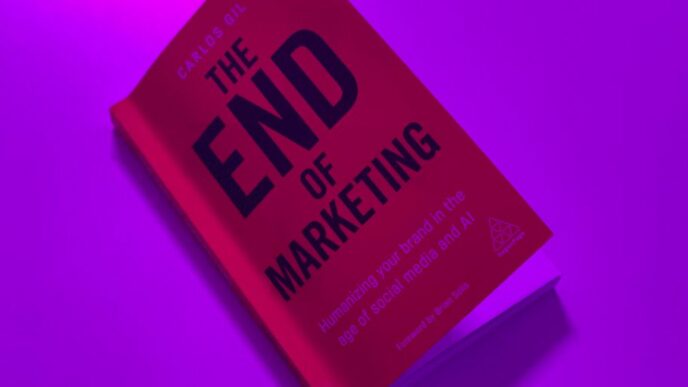Digital marketing is evolving quickly, driven by technological advancements and changing customer behaviors. Staying ahead of these trends is crucial for entrepreneurs, small business owners, and digital marketers who want to maintain a competitive edge. 2025 is poised to bring exciting new opportunities and shifts in the digital marketing landscape. This blog explores seven key digital marketing trends you cannot afford to miss, along with actionable strategies to implement them effectively. Whether you’re trying to grow your social presence or improve customer engagement, these insights will help.
1. AI-Powered Marketing Takes Center Stage
Artificial intelligence (AI) has been steadily revolutionizing different aspects of marketing, and by 2025, it will become an indispensable tool for creating personalized and data-driven campaigns. According to Digital Marketing Agency Dallas, brands are increasingly leveraging AI for predictive analytics, customer segmentation, and even content creation. An AI-driven marketing strategy can enhance customer experience by offering tailored recommendations and automating repetitive processes.
One way to execute this strategy is by integrating AI tools such as ChatGPT or JasperAI into your content marketing efforts. These tools can generate blog posts, emails, and ad copy based on specific trends or audience preferences. Additionally, predictive analytics software like HubSpot or Salesforce can be used to forecast customer behaviors and market trends, empowering you to make data-backed decisions. Finally, leveraging AI-powered chatbots such as Drift helps improve customer service and engagement by instantly addressing queries and providing recommendations.
2. Voice Search Optimization Becomes Essential
Voice search continues to gain traction as more households adopt smart devices like Amazon Echo and Google Home. Dallas SEO shares that by 2025, it is predicted that over half of all online searches will be voice-based, transforming SEO strategies for digital marketers. Voice searches tend to be longer and more conversational than traditional text-based searches, so businesses must adapt their content to match this growing trend.
To optimize for voice search, focus on conversational keywords and long-tail search queries. Creating an FAQ section on your website that answers commonly asked questions in simple language is an effective step. Ensure your business is listed on platforms like Google My Business, as voice searches often result in local queries such as “coffee shop near me.” Additionally, structured data or schema markup can help search engines better understand the context of your website, increasing your chances of appearing in voice search results.
3. Social Commerce Grows in Popularity
Social media platforms are no longer just tools for engagement; they are now central to online shopping experiences. Social commerce—directly selling products through social media platforms like Instagram, TikTok, and Facebook—has quickly become a preferred way for users to discover and purchase products. By 2025, integrating your e-commerce business with social platforms will be non-negotiable.
Brands looking to capitalize on this trend should build native storefronts directly on social platforms, ensuring users can complete purchases without being redirected to external websites. High-quality visuals and compelling product descriptions should accompany your listings to drive interest. Utilize “shoppable” features like Instagram Shopping or TikTok’s in-app payment system to remove friction from the buying process. Finally, frequently engage with your audience through interactive content, such as live shopping events, which give customers a sense of immediacy and inclusion.
4. Immersive Experiences with Augmented Reality (AR) and Virtual Reality (VR)
AR and VR technologies are poised to redefine how brands connect with their audiences by creating highly immersive experiences. From virtual try-on tools for fashion to AR filters that transform mundane product interactions, these technologies are enhancing customer involvement and satisfaction in unprecedented ways.
For small businesses or entrepreneurs, incorporating AR or VR doesn’t need to be expensive. Easy-to-use platforms such as Spark AR allow you to create custom filters for social media, helping your brand stand out. Retailers can also implement AR-powered apps that enable customers to visualize products in their homes before purchasing. For example, furniture brands like IKEA have successfully used AR to allow customers to preview how products will look in their spaces. Similarly, virtual showrooms for real estate or VR walkthroughs for travel destinations can provide a modern edge to your services.
5. Sustainability-Centric Branding Gains Momentum
Consumers are becoming increasingly conscious of their environmental footprint, and they now expect brands to do the same. By 2025, sustainability will no longer be an optional value but a core pillar of successful branding efforts. Highlighting eco-friendly practices can be a game-changer for businesses looking to attract and retain today’s ethically driven customers.
To incorporate sustainability into your digital marketing strategy, begin by being transparent about your eco-friendly initiatives. Promote campaigns emphasizing sustainable sourcing, zero-waste packaging, or carbon-neutral operations. Share behind-the-scenes content to show customers your commitment to these values. Incorporating recyclable materials in your product designs or donating a percentage of profits to green initiatives can further position your brand as a sustainability leader. Don’t forget to communicate these efforts on your website, social media platforms, and email campaigns.
6. Short-Form Video Content Dominates
While long-form videos still have their place, the rise of platforms like TikTok, Instagram Reels, and YouTube Shorts has shown that short-form content reigns supreme when it comes to engaging audiences quickly. By 2025, short-form videos are predicted to account for most digital content consumption, making this an area businesses can no longer ignore.
To excel in short-form video content, focus on creativity and authenticity. Whether it’s behind-the-scenes glimpses, product demos, or quick tutorials, ensure your videos reflect your brand’s personality. For entrepreneurs and small business owners, tools like Canva can help create visually stunning videos without a steep learning curve. Consistency is critical in this format, so establish a content calendar to regularly post bite-sized, engaging clips. Analytics from platforms like TikTok or Instagram Insights offer invaluable data on what’s resonating with your audience, allowing for necessary optimization.
7. Hyper-Personalized Marketing Becomes Normative
Generic marketing campaigns are quickly becoming obsolete. With advanced data collection and processing capabilities, businesses now have the tools to deliver hyper-personalized experiences at scale, and by 2025, your customers will expect nothing less.
Start by leveraging customer data from CRM systems to craft targeted email campaigns or special discounts. Automation tools like Mailchimp or Klaviyo make it easy to customize emails based on browsing behavior or purchase history. Similarly, implement website personalization engines that dynamically adjust content based on visitor preferences. For instance, offering product recommendations tailored to individual user profiles or targeting retargeting ads that align with past behavior are effective ways to leverage hyper-personalization. Remember, personalization should feel seamless and authentic—it’s about catering to your customers’ needs without crossing into invasive territory.
Summing Up
The digital marketing trends of 2025 present a wealth of opportunities for businesses willing to adapt and innovate. Leveraging AI, optimizing for voice search, adopting social commerce, and creating immersive experiences with AR and VR are no longer optional—they’re essential for staying relevant. Sustainability-focused branding and short-form video content will help you connect with modern customers on an emotional level, while hyper-personalized marketing ensures your messaging hits the right spot.
By thoughtfully incorporating these strategies into your digital marketing efforts, you can future-proof your business and continually deliver outstanding results. Start small, track your metrics, and build your way to success. The future of digital marketing is here—are you ready to lead the way?












